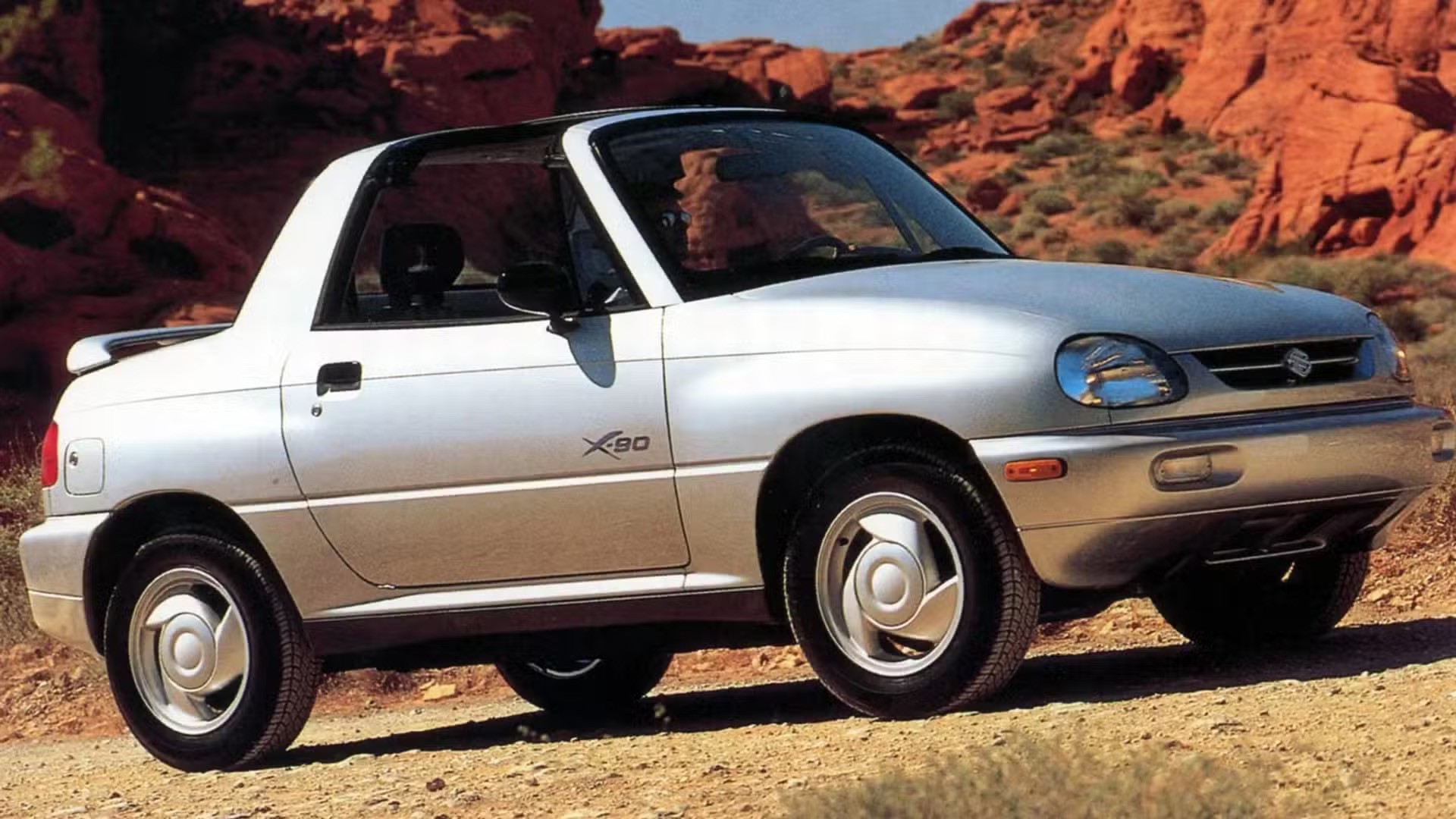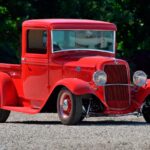Is the Suzuki X-90 truly one of the world’s worst cars? Often listed in books and articles highlighting automotive failures, the X-90 is frequently mocked for its unusual design and perceived lack of purpose. However, let’s take a closer look and reconsider this quirky vehicle. This article aims to defend the Suzuki X-90, exploring why this unique two-seater SUV is far more interesting and arguably, far from deserving the “worst car” label. We’ll delve into the specifics of the Suzuki X-90 and celebrate its unconventional charm.
The Suzuki X-90 emerged in the mid-1990s, a product of Suzuki’s bold and sometimes eccentric design philosophy. Imagine a vehicle that attempts to blend the fun of a sporty two-seater with the ruggedness of a small SUV. That’s essentially the Suzuki X-90. It featured a T-top roof for open-air driving, reminiscent of sports cars like the Honda Del Sol, but it was built upon a four-wheel-drive chassis (rear-wheel drive was also an option), boasting a higher ride height and a robust suspension system. This combination was, admittedly, unusual. Marrying the concepts of a nimble two-seater with a capable off-roader wasn’t a common approach, and the sales figures reflect this niche appeal. Between 1996 and 1998, only around 7,205 X-90s found buyers. Despite its limited market success, the X-90 was undeniably original.
The Suzuki X-90’s styling is definitely a key point of discussion. Its proportions are often described as cartoonish, even childlike. This playful aesthetic became the target of jokes, famously exemplified by Jeremy Clarkson’s humorous segment on Top Gear. But is “stupid looking” really a fair assessment? Many find the X-90’s appearance fun and lighthearted. It projects an image of carefree enjoyment, and there’s certainly nothing wrong with a vehicle that brings a smile to your face. Regarding practicality, while compact, the X-90 isn’t significantly less practical than other small sports cars or off-roaders of its era. Front cabin space is comparable to a Jeep Wrangler, and surprisingly, the X-90 offers more secure cargo capacity than a Wrangler of the same period. The X-90 features a usable trunk, a more practical solution compared to the Wrangler’s exposed rear storage area.
Stepping inside, the Suzuki X-90’s interior presented a more refined and car-like environment than other compact off-road vehicles of the 90s, including Suzuki’s own Samurai and Sidekick. It aligned more closely with the interiors of small sporty cars like the Honda Del Sol, Toyota Paseo, and Nissan Pulsar. Adding to its distinct 90s charm, the X-90 offered upholstery options featuring bold, patterned fabrics reminiscent of the era’s distinctive design trends, extending even to the door panels.
One particularly unusual aspect of the Suzuki X-90’s history is a special edition released in Europe. Marketed as the Suzuki Vitara (the platform upon which the X-90 was based) X-90 Philippe Cousteau Special Edition, it was named after the son of the renowned ocean explorer Jacques Cousteau. Philippe Cousteau, himself a diver and filmmaker, passed away in 1979, almost two decades before the X-90’s debut. The connection remains somewhat unclear, adding another layer of intrigue to the X-90’s story.
The Philippe Cousteau edition incorporated visual enhancements like a front bull bar, fender flares, and running boards, further emphasizing its quirky off-road aspirations. While the suspension setup (MacPherson struts and coils in the front, coils, wishbones, and trailing links in the rear) resulted in a firmer ride compared to purely sporty coupes, this stiffness served a purpose: off-road capability. Compared to dedicated off-roaders, the X-90 offered a more civilized on-road experience while still possessing respectable off-pavement potential. While not designed for extreme rock crawling, the X-90 is capable of handling basic off-road trails. With modifications like larger tires and a spirit of adventure, owners have surprisingly pushed the X-90 to accomplish more challenging off-road feats.
Powering the Suzuki X-90 was a 1.6-liter inline-four engine producing around 95 horsepower. While not a powerhouse, it was adequate for its time, comparable to engines in vehicles like the Honda Del Sol (around 106 hp). Fuel economy was reasonable, achieving mid-20s MPG. The X-90 was conceived as an unconventional and fun vehicle, a concept Suzuki cleverly highlighted in its marketing campaigns, even featuring Pez dispensers in promotional materials.
The Suzuki X-90 was undoubtedly a peculiar car, born from a unique vision and targeting a niche market with specific demands. However, labeling it as one of the “worst” cars is a narrow-minded perspective. In many ways, its very strangeness makes it stand out. Consider this: the X-90 is arguably the best (and perhaps only) compact T-top, two-seater, 4×4 with a trunk ever created. Red Bull even chose the X-90 for promotional purposes before transitioning to Minis, suggesting a certain appeal and recognition of its distinctive character.
Dismissing the X-90 as a “worst car” is to miss the point entirely. It was a daring experiment, attempting to create a new automotive category. While the market niche didn’t explode, the X-90 achieved its goals effectively within its intended context. It embraced its identity fully. Today, the Suzuki X-90 remains a cool and distinctive vehicle. Spotting one on the road is almost guaranteed to elicit a smile. The X-90 is a testament to automotive fun and individuality, rendered in metal and rubber. The Suzuki X-90 is not a “worst car”; it’s an automotive oddity that deserves appreciation for its unique place in car history.

